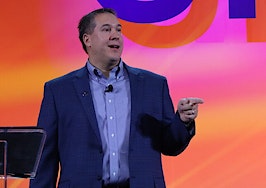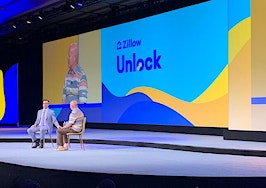A year and a half after Zillow began buying houses with cash, the online real estate giant says that its instant iBuyer offers are nearly the same as what sellers can get on the open market.
The company revealed the results of a new analysis Tuesday, saying that it looked at 3,200 homes where sellers received a cash offer from Zillow but ultimately rejected the offer and sold via traditional methods. In those cases, homeowners ultimately sold their properties for just slightly more than Zillow was willing to pay.

Errol Samuelson
“We found that these homeowners sell for an average of about 0.22 percent more than Zillow’s offer,” chief industry development officer Errol Samuelson revealed in a blog post.
Samuelson goes on to say that since launching the iBuying program, dubbed Zillow Offers, in spring of 2018, “more than 170,000 sellers have requested an offer from Zillow.” The response has been “overwhelmingly positive,” and Samuelson ultimately concludes that “selling on the open market may not result in a significantly higher price than Zillow’s offer.”
In an email, a Zillow spokesperson further explained that the analysis looked at the “gross offers” the company makes, which means an offer based on the home’s assessed market value and which comes “after we’ve seen their property.” The spokesperson also said that Zillow’s cash offers “very rarely” change after doing an onsite evaluation.
Zillow’s analysis thus offers a useful insight into the financial workings of the iBuyer market, which in addition to Zillow is dominated by companies such as Opendoor and Offerpad.
The analysis also bucks some of the conventional wisdom that iBuyers need to make below-market offers in order to quickly flip the home and make a profit. For example among other industry figures, Redfin CEO Glenn Kelman — whose company has its own cash offer program — argued earlier this year that iBuying typically involves trade-offs that include getting discounted offers.
This latest analysis suggests that at least on the most basic level, those trade-offs don’t have to be very big.
However, there are still unanswered questions about the actual, take-home profit sellers make when using an iBuying program.
For example, in Zillow’s analysis, the company looked at publicly recorded purchase prices of homes because, according to the spokesperson, it wanted to compare “apples to apples.” But public records don’t break down what happens to the money from a home sale so it’s difficult to tell from a simple price analysis which options tend to make consumers more money.
“Net proceeds in traditional sales aren’t something that is recorded publicly, so that’s not something we were able to track,” Zillow’s spokesperson added.
This is an especially relevant point when it comes to Zillow Offers because the program charges an average 7.5 percent service fee — which is higher than the traditional 6 percent commission that agents collect (and split) in a conventional sale. It follows, then, that the higher fees involved in a Zillow Offers sale could mean sellers actually pocket less money than they might in a conventional sale with an identical price.
But Zillow thinks it’s more complex than that. In his blog post, Samuelson notes that simply comparing commissions to fees “ignores that a home seller has to manage, or incur other costs.” He specifically points to cleaning, staging, HOA fees and various other moving related costs.
“These are meaningful costs that add up quickly,” Samuelson argues. “With Zillow Offers, a home seller doesn’t have to worry about doing any of these themselves.”
Zillow also handles repairs on homes it buys, then subtracts the cost of those repairs from the purchase price, according to the blog post. That further complicates efforts to understand net proceeds, though Samuelson argues that Zillow’s approach is a financial benefit to consumers.
“Because of our scale, the costs associated with repairs when we do them tend to be lower than what an individual homeowner would pay if they contracted out the work themselves as individuals,” Samuelson writes.

Rob Hahn
Zillow’s analysis is unlikely to settle the debate over what kind of a deal iBuying actually represents for consumers. However Robert Hahn, managing partner at real estate marketing and consulting firm 7DS Associates, told Inman in an email that he at least was “not surprised by the data.”
“I’m curious about some of the details, and the 0.22 percent is a bit surprising,” Hahn explained, “but that tracks with the data I’ve been collecting since early this year.”













